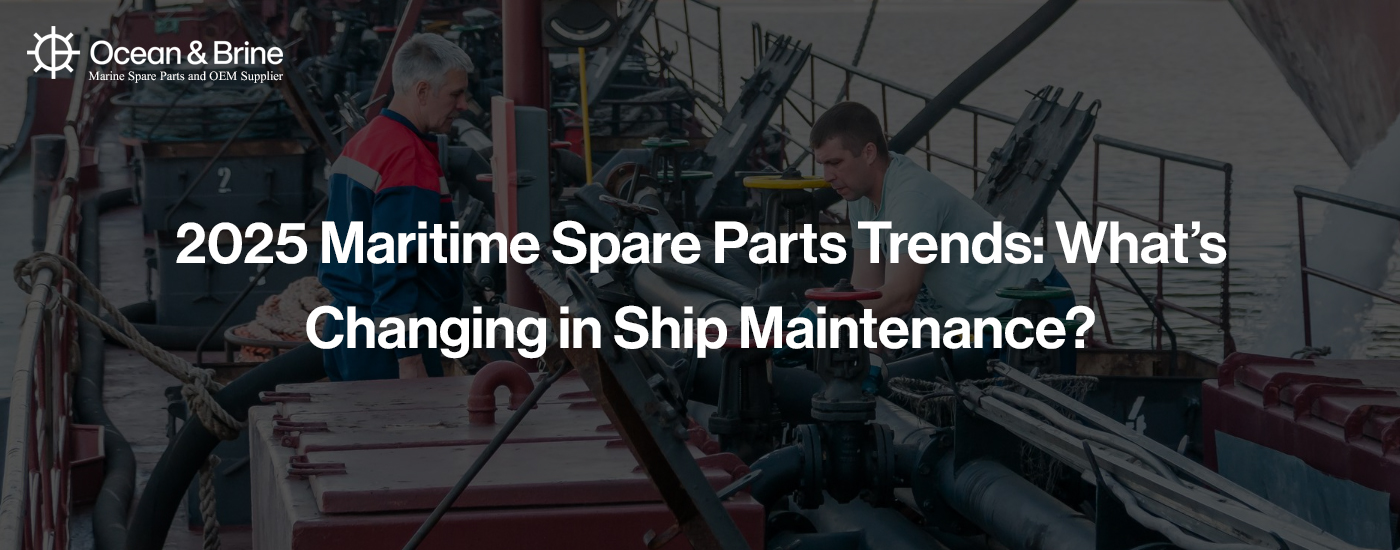In 2025, the maritime spare parts industry will be under going a significant transformation driven by technological advancements, environmental regulations, and a focus on sustainability. Key trends shaping the sector include:
Why should marine spare parts suppliers adopt advanced technologies?
Marine spare parts suppliers and manufacturers should adopt advanced technologies for several compelling reasons. As the maritime industry becomes more competitive, regulated, and sustainability-driven, a need to adopt technologies that help stay ahead of the competition is imperative. Here are a few reasons:
Enhanced operational efficiency: Automation and AI can streamline inventory, orders, and maintenance like never before helping you monitor equipment health, predict issues before they occur, and reduce downtime.
Improved quality: Advanced manufacturing techniques like 3D printing, and robotics can fasten production with accurate and consistent parts production. Further innovations in this line contribute to corrosion resistance and staying sturdy during harsh weather.
Customized products: 3D printing can produce obsolete parts on demand especially for ships in far-off locations. Computer aided designing (CAD) and Computer aided manufacturing (CAM) can reduce the production cycle time and fulfil customized production per the vessel’s needs.
Cost-effective solutions: The predictive maintenance and inventory optimization cost more as an initial investment but they can significantly reduce the cost of production. Remote diagnostics and smart systems can cut down unnecessary inspections and labour-intensive procedures.
Stay ahead in competition: By embracing digital transformation, suppliers and manufacturers can differentiate themselves through faster service, higher efficiency, and value-added features like smart integration with ship systems.
What are the advanced technologies adopted by spare parts manufacturers and suppliers?
- Internet of Things (IoT) and Artificial Intelligence (AI): Modern vessel owners are equipping their vessels with IoT sensors and AI-driven systems to monitor real-time data on fuel consumption, equipment health, and cargo conditions. This integration facilitates predictive maintenance, reduces downtime, and enhances operational efficiency
- Blockchain for Supply Chain Transparency: Blockchain technology is being utilized to ensure secure, transparent, and fraud-resistant procurement and supply chain processes. This enhances trust and efficiency in maritime operations
- Environmental sustainability and regulatory compliance: TheInternational Maritime Organization (IMO) has stringent requirements to reduce emissions. Hence, environment-friendly technologies are much sought after. This includes the adoption of scrubbers, ballast water treatment systems, and energy-efficient engines
- Digitalization and smart shipping: The shift towards digitalization is leading to the development of smart ships equipped with sophisticated navigation, communication, and automation systems
- 3D printing and on-demand manufacturing: As discussed earlier in this blog, 3D printing for the on-demand production of spare parts. This approach reduces lead times, minimizes inventory costs, and allows for the rapid replacement of components, thereby enhancing the efficiency of the spare parts supply chain
These trends highlight the maritime industry’s commitment to innovation, sustainability, and enhanced operational efficiency in the realm of spare parts and equipment.
Along with the marine spare parts trends, ship maintenance is experiencing significant advancements driven by digital technologies, environmental regulations, and economic factors. Key developments include but are not limited to:
AI and ML
AI and ML algorithms are being used to analyze vast amounts of operational data, enabling the prediction of equipment failures before they occur. This proactive approach reduces downtime and maintenance costswhile improving safety and efficiency.
Edge Computing for Real-Time Processing
Edge computing facilitates data processing directly at the source, such as onboard sensors, allowing for immediate analysis and decision-making. This reduces latency, decreases reliance on cloud infrastructure, and enhances the speed and reliability of maintenance operations.
Augmented Reality (AR) for Maintenance Assistance
AR technology is being integrated into maintenance procedures, providing technicians with interactive, real-time visualizations of equipment and step-by-step guidance. This enhances accuracy, reduces human error, and accelerates repair processes.
Emphasis on Cybersecurity
With increased digitalization, the maritime industry is prioritizing cybersecurity to protect against potential threats. Implementing robust security measures is essential to safeguard sensitive data and ensure the integrity of maintenance operations.
Rising Maintenance Costs and Regulatory Compliance
Factors such as increased material and labour prices, supply chain challenges, and the need for compliance with stringent environmental regulations are contributing to higher maintenance costs. Investments in energy-efficient technologies and green retrofitting are necessary to meet regulatory standards and promote sustainability.
These trends reflect a shift towards more proactive, efficient, and technologically advanced maintenance strategies in the maritime industry.
